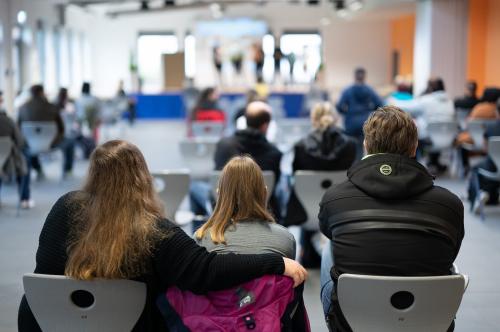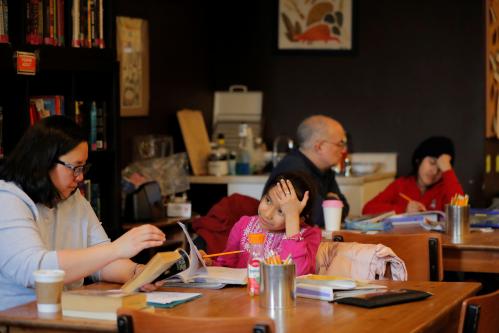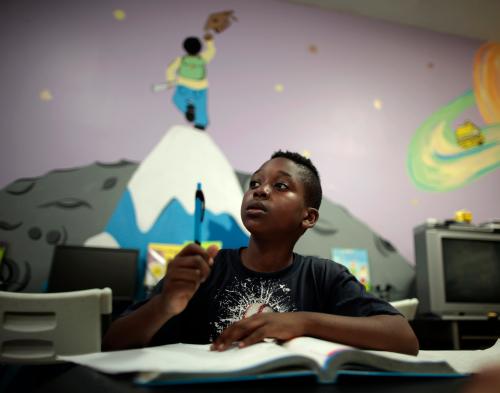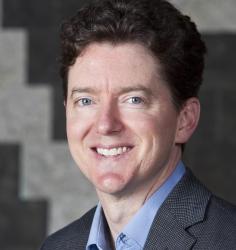It’s natural for people to get stories wrong in crisis, and the COVID-19 pandemic is no exception. But we’re still getting key things wrong about COVID-19’s impact on schools after officially exiting the pandemic. Here, I describe three myths about the pandemic’s impact on public education. From my perspective, a combination of sensationalist headlines and political opportunism fuel the first two myths: namely, that public school enrollment has dropped precipitously and that public schools deserve the blame for learning loss. The third myth, in contrast, makes the post-COVID-19 situation in schools seem better than it is—that is, recent changes in test scores accurately reflect students’ pandemic losses.
Myth #1: There was a “seismic” decline in public school enrollment
The first myth is that COVID-19 has gutted public school enrollments. One New York Times headline indicated a “seismic shift” with a subtitle that the “pandemic has supercharged the decline in the nation’s public school system.” Contrary to popular belief, COVID-19 has only caused a 2% drop in public school enrollments nationally. Some of the latest evidence also suggests no drop at all in cities like Detroit and New York City that were heavily criticized for staying remote so long. By comparison, there was a 15% decline during the mid-1970s-1980s without a pandemic (due mainly to demographic shifts). That’s a real seismic shift—seven times larger than the COVID-19 drop. Projected enrollments will likely drop by more than two percent in the coming years due to declining birth rates and immigration. Looking at the trend line in district enrollments ten years from now, we may barely notice the COVID-19 years. In fact, what’s most remarkable is how little COVID-19 altered public school enrollments. Every child in the country was forced out of their school buildings for a time. Parents became more familiar and experienced with the many online tools that allow students to learn from home, and some shopped around for alternatives. If ever there was a chance to reconsider, this was it. Yet, the best analyses suggest only 372,000 students switched to homeschooling or private schools—out of 50 million nationally. Critics might argue that few switched schools due to a lack of good alternatives, but polls show high satisfaction with public schools during the pandemic. One poll showed 78% of families were satisfied with how public schools handled the pandemic; in another, the figure was 80%. No, the public school enrollment drop was not seismic. The real concern ought to be that some students might have left, never to return to any form of schooling.
Myth #2: Learning loss was the fault of public schools and unions (and their push for remote learning)
The effects of the COVID-19 pandemic on students’ educational progress are undeniable, particularly in public schools. Test score declines were largest where schools were closed the longest, and public schools were closed more and had less live interaction than private schools. Recent NAEP scores reinforce that scores did not drop as much in private schools as in public schools. Do public school leaders bear responsibility for what happens in schools? To some extent, yes. People need to take responsibility for their actions. But during the pandemic, what exactly did public schools control? One thing public schools don’t control is who walks in the door. Private schools have tuition and admission criteria that mean they serve more affluent families, whereas public schools must accept all children residing in their district. One study found that the educational level of private school parents is 1.5 years higher than public school parents. The income disparity is even more astounding—67% higher for private school families. During the COVID-19 pandemic, these differences mattered. We found that students’ race and family income were among the strongest predictors of schools’ instructional mode during the pandemic. One possible explanation is the large difference in COVID-19 vulnerability across groups. Black and Hispanic people had 70% and 100% higher death rates, respectively, than white people. This is reflected in polling data showing that people of color expressed more fear of the virus during the pandemic. It is also reflected in data showing that parents of color were more hesitant about sending their kids back to school in-person. All told, these data suggest that schools were mostly following the lead of parents whose pandemic experiences and preferences around school reopenings differed. Differences in school staffing also made navigating the pandemic more challenging in public schools. For example, public schools rely more heavily on bus drivers and food service workers than private schools. Even one bus driver diagnosed with COVID-19 could upend an entire day of learning, leading public schools to lean more toward remote instruction. Of course, a large part of the staffing story was about teachers. Teacher unions received a lot of blame—some of it deserved—for the pace of school reopenings. However, we found that community demographics and politics were more strongly predictive of the timing of school reopenings than the presence of a teachers union. We should remember, too, that unions’ concerns were rooted in a good cause: to protect their members. Over a million people lost their lives from COVID-19, and the majority of deaths occurred in 2021—even after protective equipment and vaccines became available. So far, I’ve focused on how public schools and unions shaped decisions about instructional mode, but even this presumes that instructional mode was the main driver of learning loss. It certainly played a key role, but evidence also suggests that it was not the only factor at play. Student demographics strongly predicted learning loss even after accounting for instructional mode. And some students seemed to struggle more than usual, regardless of instructional mode. Students may have worried about the pandemic generally and the health of their parents and grandparents, or they may have had to chip in more to support their families during the economic downturn initially triggered by the pandemic. To chalk this all up to instructional mode is to ignore that children lived through an unprecedented social, economic, and health calamity. It’s no wonder public schools stayed remote longer. They serve students who were at higher risk during the pandemic. Public schools also involve more complex staffing arrangements which were more brittle during the pandemic. Of course, we all could have done better in retrospect. Hindsight is 20:20, and with a once-in-a-century pandemic, foresight approaches blindness. But, no, we can’t blame the public school system and union leaders for student learning loss. Why, then, are we still getting these stories wrong? I’d argue that we can thank politics—and, specifically, the right’s current focus on expanding private school choice via school vouchers. For example, one prominent voucher supporter acknowledged that they were trying to “build the best surfboard for parents. This [COVID] was the right wave.” In fact, they got two in one—Trump and COVID-19 converged into a single, massive wave. Even before COVID-19, Trump was a vocal critic of public schools, talked frequently about school choice, and appointed the nation’s chief voucher advocate, Betsy DeVos, as secretary of education. Trump plus COVID-19 amplified the drumbeat against public schools and for vouchers. But not all the headlines were designed to make public schools look bad. One, perhaps accidentally, made them look better.
Myth #3 – The decline in test scores accurately captures the full educational loss
As bad as it seems, the data on student test scores understates what children lost educationally. This is the case for three reasons:
- Most of the test results we see pertain only to students (regularly) attending public schools. Tests are generally only taken by students who are in school buildings. However, we know that some students permanently switched to virtual schooling, and that even students who stayed in brick-and-mortar schools are missing class–and perhaps missing sitting for standardized tests–twice as often as before. Since these groups learn at slower rates, this missing data problem is likely inflating average scores.
- Test scores mostly capture the material students have learned recently, not over the full course of the pandemic. This is easiest to see with state standardized tests that are aligned to grade-specific standards. The 8th-grade math test, for example, is designed to cover the math that most students take in 8th grade. But, with COVID-19, students missed learning during three academic school years. While some of the lost learning in these three earlier grades will show up in 8th grade, not all of it will. So, when we compare tests in any given grade before and after COVID-19—which is essentially what all the learning loss studies do—we’re likely understating the extent of learning losses.
- Test scores do not adequately capture declining mental health and lower value and expectations for education. Test scores provide a limited view of students’ well-being. In a survey we conducted of students in New Orleans before and after COVID-19 (2019 and 2022), we saw a trend toward students being more concerned about their emotional health, putting forth less academic effort, valuing education less, and having lower expectations of college attendance. These will likely have a more significant negative impact on children’s potential in the long run than what test scores are showing.
This understatement of the educational problem isn’t deliberate in the way the sensationalism and politicization of the first two myths appear to be, but the harm of this misrepresentation may be no less consequential. We have an even bigger problem on our hands than we realize, and current efforts are falling woefully short. The influx of federal ESSER funds to schools, while well intentioned, has proven difficult to spend effectively, especially with ongoing labor shortages and the temporary nature of the funding. Even the most promising strategies, like tutoring, aren’t reaching many students and aren’t designed to address declining mental health and value and expectations for education. Vouchers, meanwhile, actually seem to make the academic problems worse. I can’t say that I have a magic bullet, but, clearly, we have little chance of tackling these COVID-19-induced difficulties if we don’t better understand and communicate them first.
The Brookings Institution is committed to quality, independence, and impact.
We are supported by a diverse array of funders. In line with our values and policies, each Brookings publication represents the sole views of its author(s).








Commentary
Op-edThree myths about the impact of COVID-19 on public education
August 29, 2023